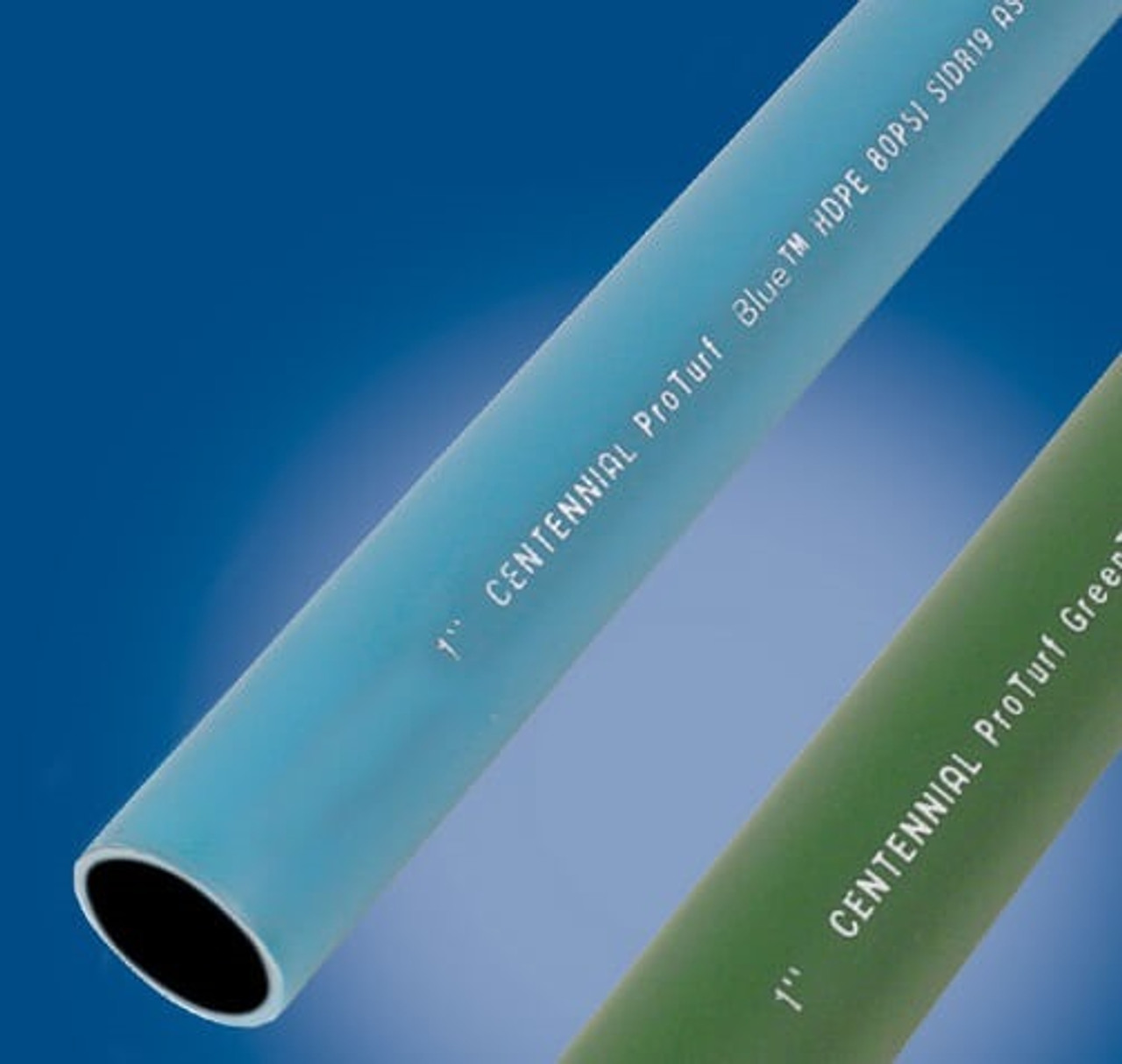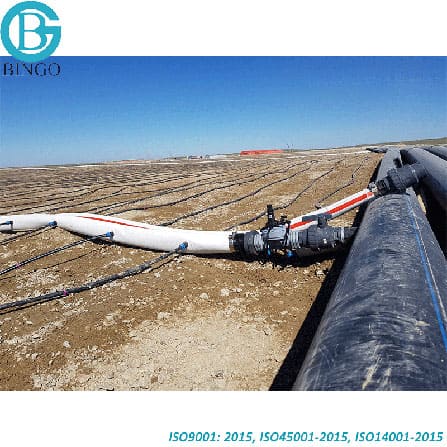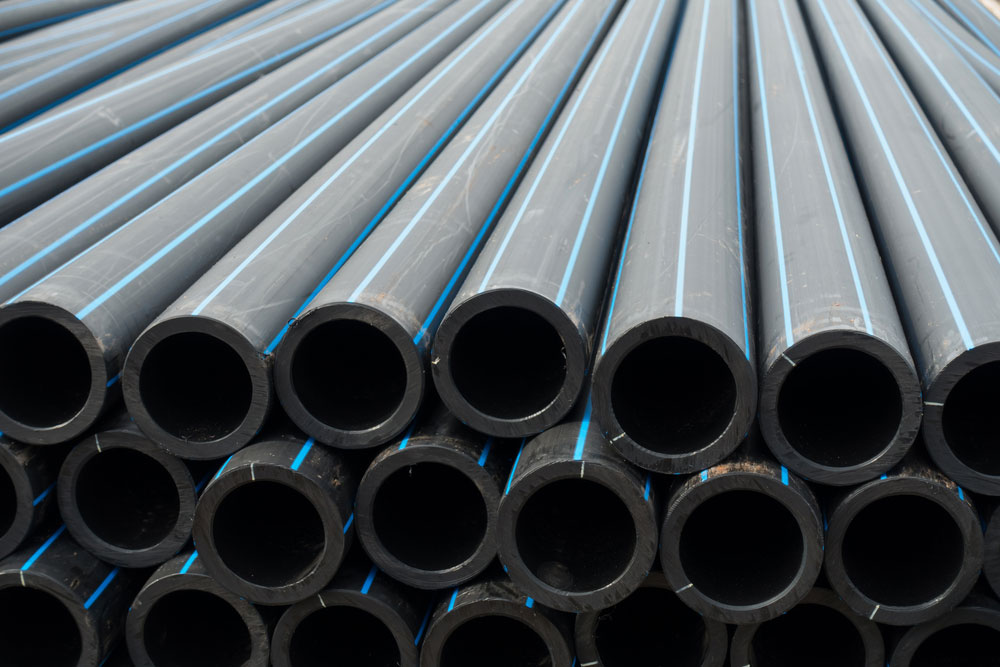How Midland TX HDPE Pipe Fittings in Stock Enable Faster Builds
Wiki Article
Explore the Production Refine Behind High-Quality HDPE Pipeline and Its Applications
The production procedure of top notch HDPE pipes is intricate and methodical. It begins with the selection of raw materials that enhance efficiency. Following this, ethylene undertakes polymerization to develop resin, which is then shaped through extrusion. Quality control is vital, making certain that the end product fulfills stringent standards. Nevertheless, the trip of HDPE pipes doesn't finish with manufacturing. Their applications across different industries expose a wider importance worth examining.Comprehending HDPE: Features and Advantages

High-density polyethylene (HDPE) is a functional thermoplastic known for its sturdiness and resistance to numerous environmental variables. This product displays exceptional tensile strength, making it appropriate for requiring applications. Its low-density structure contributes to a light-weight item, facilitating simplicity of dealing with and installment. HDPE likewise showcases exceptional resistance to chemicals, which lessens deterioration when subjected to harsh substances.
The material's reduced moisture absorption further improves its durability, making it excellent for usage in pipelines and storage tanks. Additionally, HDPE is immune to ultraviolet (UV) radiation, guaranteeing that products keep their honesty even when revealed to sunshine. Its versatility enables for the creation of detailed forms without jeopardizing stamina. The environment-friendly nature of HDPE, frequently originated from recycled products, includes to its charm, advertising lasting techniques in manufacturing. On the whole, these residential or commercial properties and advantages make HDPE a recommended selection for different industrial and consumer applications.
Raw Product Option for HDPE Manufacturing
The option of raw materials for HDPE production is vital to confirm the end product fulfills the preferred specs and top quality standards. High-density polyethylene (HDPE) is primarily generated from polymerized ethylene, stemmed from nonrenewable fuel sources such as natural gas or crude oil. The top quality of these feedstocks considerably affects the mechanical and thermal homes of the last HDPE.Additives additionally play a considerable role in improving HDPE's performance, consisting of antioxidants, UV stabilizers, and colorants, which boost longevity and resistance to environmental variables. The selection procedure need to think about not just the chemical composition of the raw materials however also their processing qualities to assure efficient production.
Moreover, the sourcing of raw materials need to focus on sustainability and conformity with ecological guidelines, as liable methods are imperative in today's market. Ultimately, careful raw material choice lays the foundation for creating high-grade HDPE pipes suitable for varied applications.
The Extrusion Process: Forming HDPE Pipe
The extrusion procedure plays a vital function fit HDPE pipes, starting with careful material preparation strategies that ensure excellent circulation and consistency. Equally crucial is the style of the die, which straight affects the last dimensions and surface area top quality of the pipeline. Together, these aspects contribute considerably to the performance and quality of HDPE pipeline production.Material Prep Work Strategies
Efficient production of HDPE pipelines begins with thorough material preparation methods, particularly the extrusion process. During this stage, high-density polyethylene resin is very first dried out to remove wetness, ensuring ideal circulation characteristics. The material is then fed into the extruder, where it undergoes heating and melting, transforming into a thick state. This home heating procedure is carefully managed to keep the material's integrity and performance. The liquified HDPE is compelled with a die, forming it right into a constant pipeline form. Proper temperature level monitoring during extrusion is necessary, as it directly affects the material's properties and the end product top quality. When shaped, the HDPE pipe is cooled down and reduced to defined sizes, prepared for succeeding processing and applications.Die Design Importance
Precision in die style plays an important role in the extrusion process of HDPE pipes. The die works as the final shaping tool, directly affecting the pipeline's measurements, wall surface thickness, and surface coating. A properly designed die guarantees uniform material circulation, lowering flaws such as abnormalities and weak areas. The geometry of the die need to be optimized to accommodate the details buildings of HDPE, including its thickness and thermal habits during extrusion. Additionally, the cooling price of the product as it passes with the die can markedly affect the pipeline's structural integrity. Spending in sophisticated die technology is crucial for producers intending to generate high-grade HDPE pipes that meet sector standards and consumer assumptions.High Quality Control Measures in HDPE Production
Various factors affect the quality of HDPE pipeline manufacturing, efficient quality control measures are vital to guarantee uniformity and reliability in the last product (American Plastics HDPE Pipe Manufacturing). Key quality assurance techniques include extensive material assessment, confirming that the raw polyethylene satisfies well-known criteria for purity and thickness. Throughout the extrusion procedure, parameters such as temperature, stress, and cooling time are very closely kept track of to preserve dimensional precision and architectural honestyAdditionally, post-production testing is vital; manufacturers frequently carry out hydrostatic examinations to analyze the pipe's stamina and resistance to pressure. Visual evaluations for surface issues better improve quality control. Accreditation from relevant standards organizations, like ASTM or ISO, provides an added layer of reliability. By executing these complete top quality control actions, makers can lessen flaws, improve performance, and ensure that the HDPE pipelines fulfill the certain requirements of various applications, ultimately leading to customer satisfaction and count on the item.
Applications of HDPE Pipe Across Industries
HDPE pipes are made use of throughout various sectors as a result of their resilience and versatility. In water circulation systems, they ensure efficient distribution, while in wastewater administration, they offer dependable remedies for waste transportation. Additionally, farming irrigation networks profit from HDPE's resistance to rust and flexibility, making it an excellent option for modern farming techniques.
Water Distribution Solutions
A substantial variety of sectors count on high-density polyethylene (HDPE) pipes for reliable water circulation systems. Understood for their longevity and resistance to deterioration, HDPE pipelines are commonly utilized in municipal supply of water networks, agricultural watering, and commercial applications. Their light-weight nature facilitates easy handling and installation, lowering labor prices and time. In addition, HDPE pipelines can suit various pressure degrees, making them appropriate for both reduced and high-pressure systems. hdpe pipe fittings Midland TX. The flexibility of the product enables for seamless combination into existing infrastructure, reducing the need for considerable excavation. Furthermore, HDPE's resistance to chemical seeping warranties that the water provided remains secure and clean, making it an optimal choice for maintaining the quality of safe and clean water throughout different industriesWastewater Management Solutions
Efficient water circulation systems additionally lead the way for ingenious wastewater administration solutions, where high-density polyethylene (HDPE) pipes play a significant role. Distinguished for their resilience and resistance to rust, HDPE pipes are suitable for moving wastewater in various settings. Their adaptability permits simple setup in complex environments, minimizing the need for comprehensive excavation. American Plastics HDPE Pipe Manufacturing Furthermore, HDPE's smooth interior surface decreases friction, improving flow rates and effectiveness. These pipes are likewise immune to chemical leaching, making sure that impurities do not endanger the surrounding setting. Industries, municipalities, and treatment facilities progressively depend on HDPE pipes for their integrity and durability, making them a favored choice for modern wastewater management systems. This adaptability emphasizes the crucial importance of HDPE pipes throughout countless applications.Agricultural Watering Networks
Agricultural irrigation networks benefit significantly from using high-density polyethylene (HDPE) pipes, which offer reliable and trustworthy water shipment to plants. HDPE pipes are lightweight, making them very easy to carry and set up, while their versatility enables numerous setups in varied terrains. These pipelines demonstrate excellent resistance to deterioration, chemicals, and UV radiation, guaranteeing sturdiness in severe agricultural settings. Furthermore, their smooth interior surface minimizes rubbing loss, maximizing water flow and minimizing power expenses connected with pumping. The long life of HDPE pipes, often surpassing half a century, adds to decrease maintenance and substitute expenses. Farmers significantly depend on HDPE pipelines to improve watering efficiency and promote lasting agricultural methods, inevitably leading to enhanced plant yields and source conservation.
Future Trends in HDPE Pipe Modern Technology
As the need for sustainable and effective framework expands, advancements in HDPE pipeline technology are positioned to transform numerous sectors. Arising patterns consist of the assimilation of wise modern technologies, such as sensing units and IoT abilities, which promote real-time surveillance of pipe problems, lowering maintenance prices and stopping leaks. In addition, the development of sophisticated manufacturing strategies, such as 3D printing, is allowing the production of complicated, customized pipe layouts that accommodate details project demands.The emphasis on recycling and circular economic climate practices is driving the development of HDPE pipelines made from recycled products, enhancing sustainability. Improved jointing approaches, such as electro-fusion and mechanical fittings, are likewise enhancing installment efficiency and dependability. Ultimately, the growing focus on ecological policies is pressing suppliers to adopt greener production procedures, ensuring that HDPE pipes not just meet market criteria but also promote an even more sustainable future for facilities development.
Regularly Asked Questions
Just How Does HDPE Compare to Other Plastic Products?
HDPE exceeds many various other plastic products regarding durability, chemical resistance, and flexibility. Its reduced density and high tensile strength make it excellent for numerous applications, frequently surpassing options in both performance and durability.What Are the Ecological Influences of HDPE Production?
The environmental impacts of HDPE production consist of greenhouse gas discharges, energy consumption, and possible contamination from producing processes. In addition, incorrect disposal can result in soil and water contamination, raising concerns concerning long-lasting environmental effects.Can HDPE Pipes Be Reused?
Yes, HDPE pipelines can be recycled. Several centers accept utilized HDPE for handling, changing it right into new products. This reusing contributes to sustainability initiatives, lowering plastic waste while saving sources and energy in the production cycle.What Is the Life Expectancy of HDPE Pipes?

How Do Temperature Variants Influence HDPE Pipeline Efficiency?
Temperature variations significantly impact HDPE pipe performance, impacting versatility and stamina. High temperature levels can lead to softening, while low temperatures may cause brittleness, inevitably influencing the pipeline's durability and viability for different applications in diverse settings.Report this wiki page